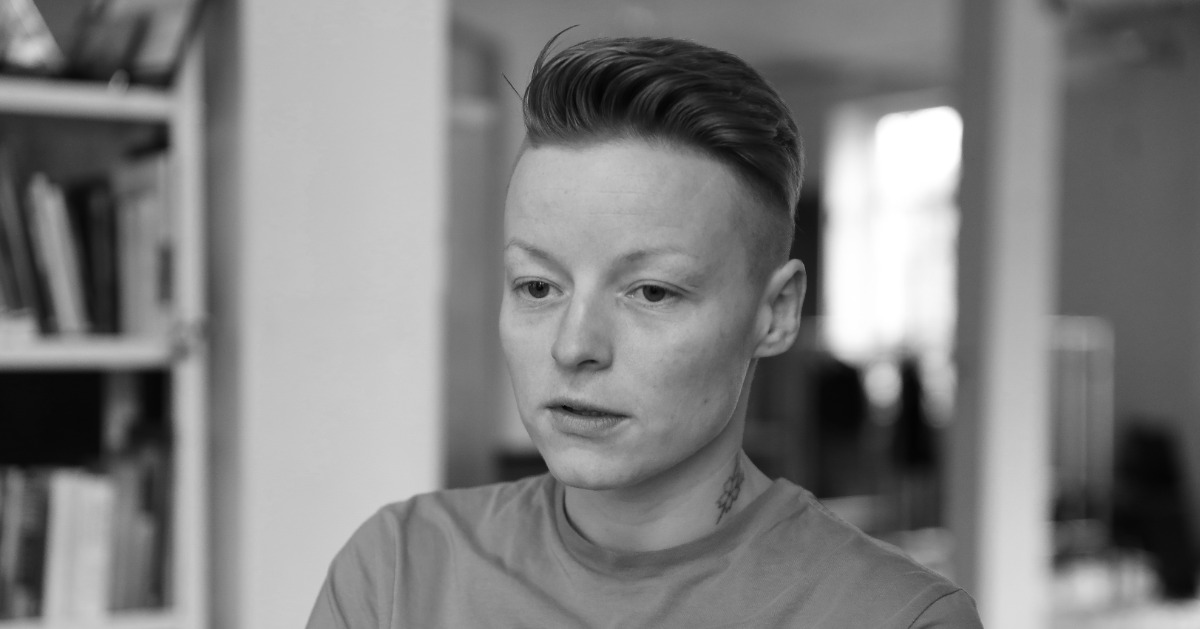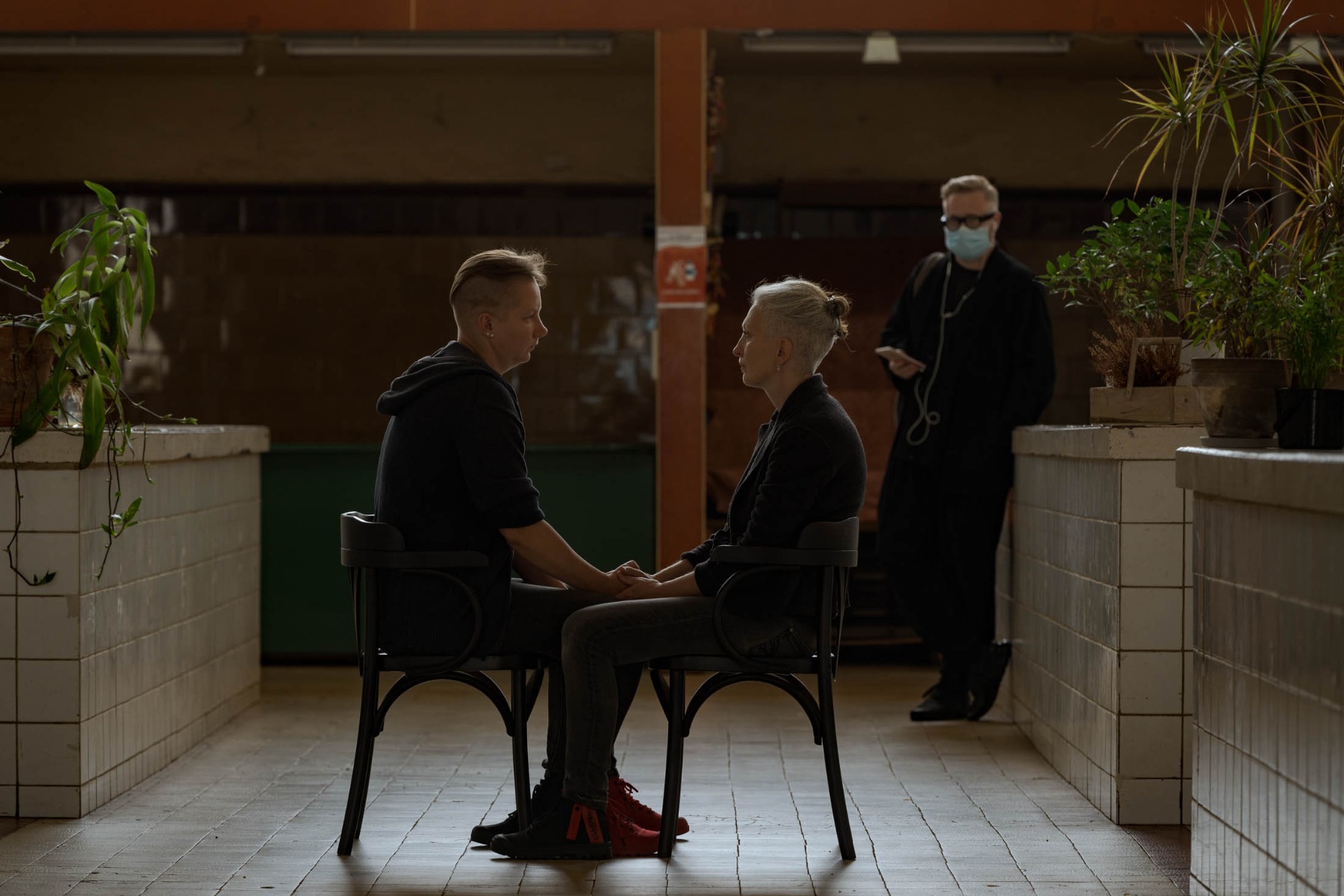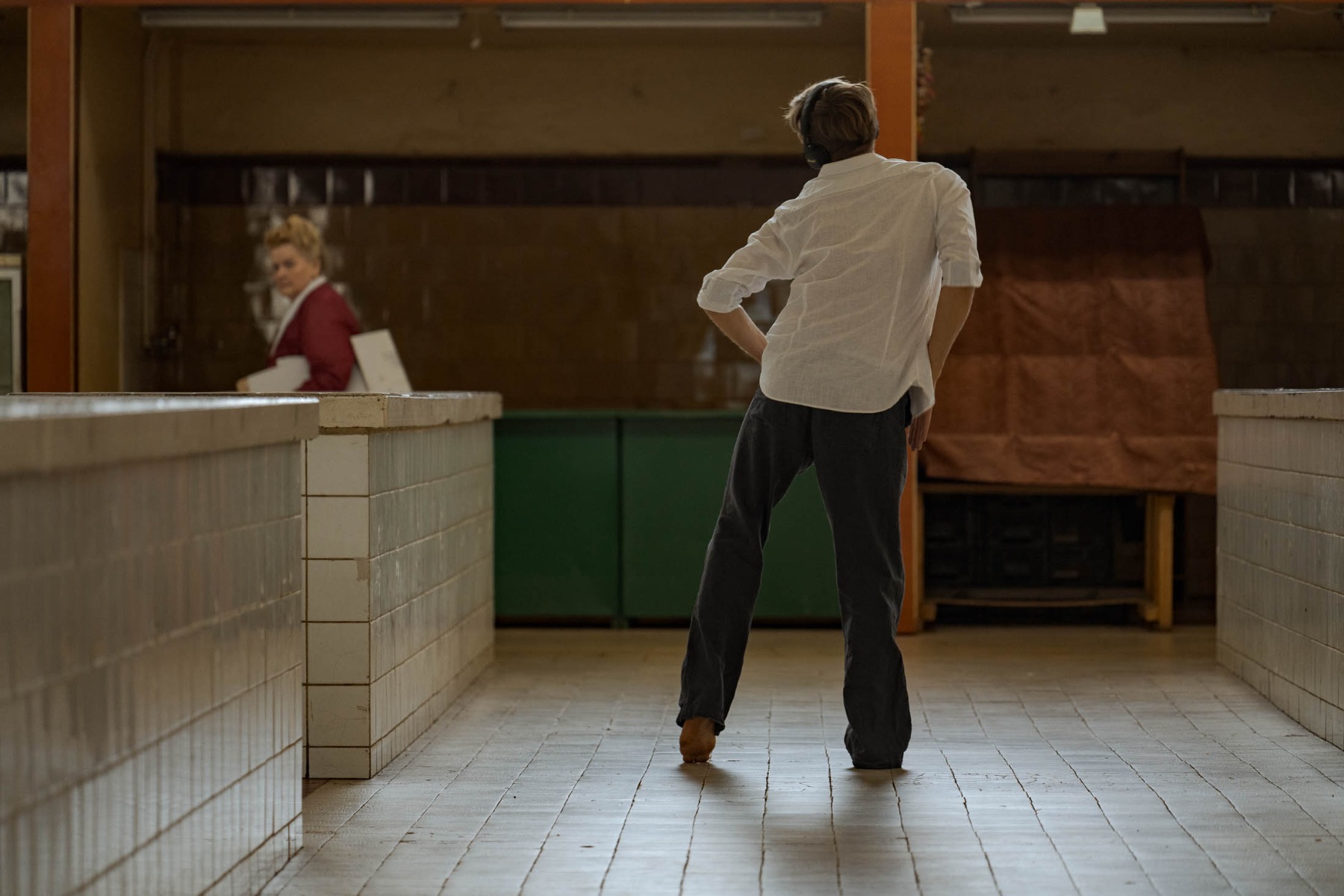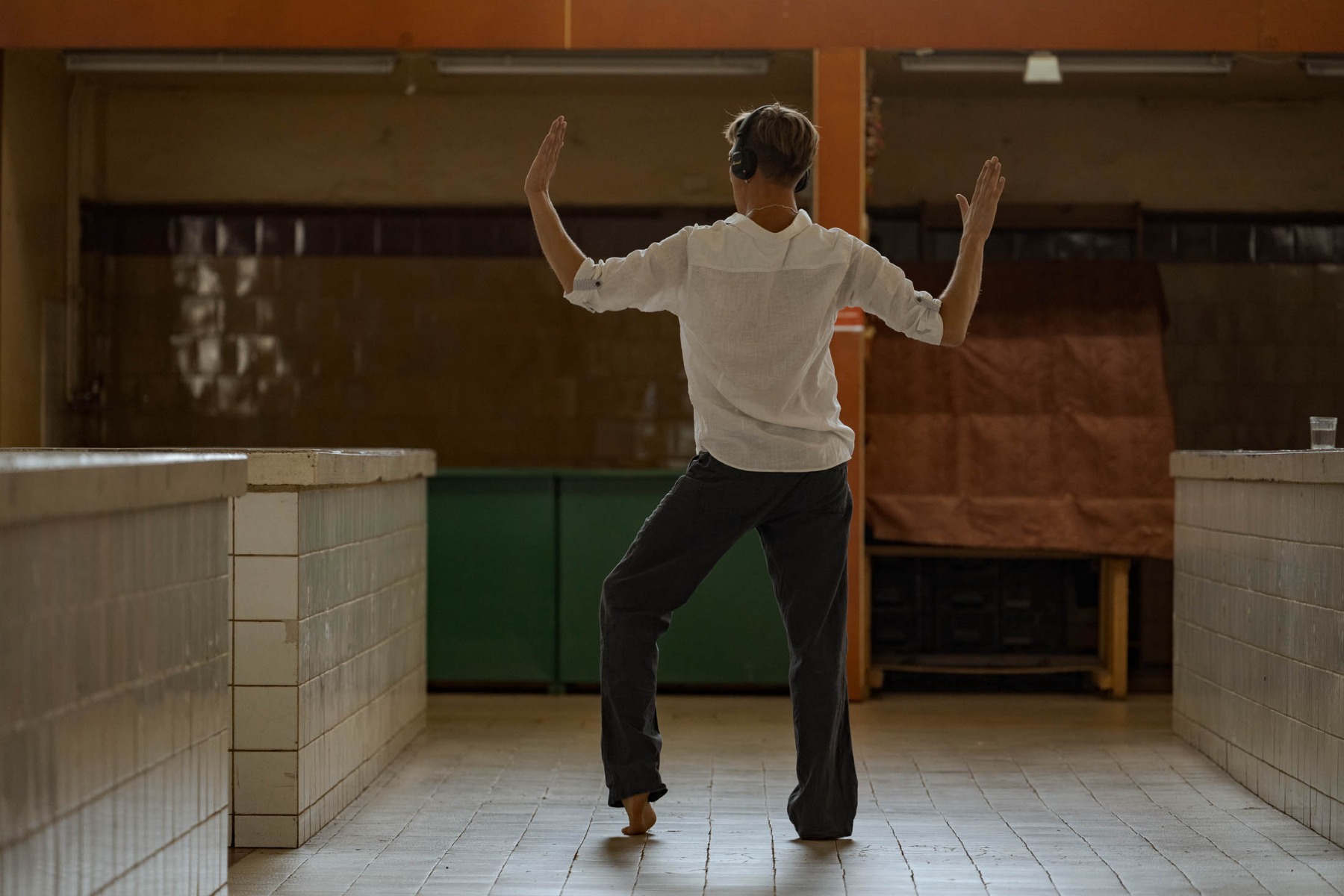
Do you even care?
Barbara Lehtna*
I struggle with people. They say things without thinking, they walk too slow, and they simply eat too loud. And yet... I need them. I need people as much as an addict needs their substance because I think that’s the way we’re built as humans: dependent on each other. And so let it be that this article is as much of an honest confession as an exploration of the thoughts of a person who is paradoxically an optimistic extrovert but also an Eastern-European version of a misanthrope. Sometimes, I find myself thinking that perhaps it’s exactly the tension between the two sides of me, the Инь and the Янь, that has made me into an artist whose works intend to create spaces where being together is not always easy yet needed. I’m fervently fascinated with fragile and vulnerable moments inflicted by people agreeing to share agency and responsibility in order to discover something new about themselves and each other. However, such vulnerability never comes without risk. Although risk can seem sexy, it can also be a violent lover who leaves you with loss, ridicule, and pain. So therefore, I ask myself often what is it exactly I want my art to do. As a twenty-year-old, I would have been as loud as a young communist in 1905 when declaring that art should take us to the barricades with bared breast (or why not two?) to fight for those who need to be fought for. To be honest, I never really got to determining who I needed to fight for, but I guess such is the passion of youth: abrupt, forceful, and dreadfully clumsy. Now at age thirty, I notice that I’ve already been wandering for several years towards making art that uses sustenance and reparation to head towards a utopistic process of acknowledging a revolution that collects from mending and fixing, not breaking apart and destroying. This has meant re-thinking why and how I work, while trying to leave behind ideas about jolting the audience in order to discover how to actually care for them. However, as I believe that a healthy distrust towards one’s (professional) practice is the only way to one’s (professional) happiness, I will use this text to try to bring light to a bigger change in the arts through examining my own journey.
From defining to practicing
I see one possible starting point leading up to a change of discourse in the contemporary arts in the 1980s, when the Western female care ethicists started to make record of the first care crisis. Some Feminist authors, such as Carol Gilligan and Nel Noddings, found that care had lost its importance in all levels of societal decision making, because the dominant patriarchal order was built upon justice-based morality which served not only as a normative ethical theory but also as a moral code.[1] In the next two decades, a series of thinkers started to call out the capitalist and neoliberal principles governing the Western Societies built to flawlessly over-produce whatever could be sold. The arts were not left untouched by ruthless over-industrialisation, and these processes slowly bled over throughout this period, triggering artists and art institutions to re-consider their intentions. I believe that the second part of the steady climb to the summit of the mountain called “Art cares for you” has been the accumulative trend of working with non-professional performers, which I believe finds its roots in the blitzkrieg of non-relational aesthetics of the 1990s conceived by the French art curator and critic Nicolas Bourriaud[2]. Creating new, often vulnerable yet ethically dubious work with people who might not have the training nor the preparation has triggered many very welcomed discussions about if and how care could be applied in these practices. Moreover, many artists have wonder if art doesn’t too often template itself on everyday media that feed off of the effect of the negative and shocking without worrying too much of the implications that arrive later. Accordingly, these questions have drawn sharp attention to the evident burnout pandemic in the art sector, which runs despite the lack of funding, and therefore often through the exploitation of those who don’t have the privilege to say “no”. So yes, gradual change has been upon us already for three decades, forming the care-explosion as its pinnacle.
Some months ago, I had the chance to see a theatre piece called “Ejaculation Falls” (2021) in Helsinki[3]. Director Essi Rossi had worked with a group of seven people in order to probe different margins of sexuality and gender. As a result, the audience encountered seven success stories about different yet omnibenevolent journeys to (queer) sexual freedom and pleasure. It was clear throughout the performance that care had been in the centre of the process, which was marked not only by a sexual therapist’s presence throughout the making and performing of the piece, but also in how the participants treated, listened, and comforted each other – from the moment of walking out onto the stage until the final applause. I felt that it was this level of care that, at least partially, triggered the audience to cry with the performers and to embrace them after the end of the performance.
View from “Mīlestības vārdā / In the Name of Love” (2021) by Barbara Lehtna and Katrīna Dūka. Photo: Andrejs Strokins 
A similar sharing process was also at the core of “Mīlestības vārdā / In the Name of Love” (2021), which was co-created by artist Katrīna Dūka, eight queer people from Riga, and me for the International Festival of Contemporary Theatre “Homo Novus” a few months before[4] “Ejaculation Falls”. Katrīna and I were interested in working with people living in Riga who would be willing to share their stories about queerness in the Latvian public space. As the process started only months after the alleged homophobic incident in Tukums,[5] it was more important than ever to create and hold a safe space for everyone involved in the project. As a result, a performative installation was premiered, and the audience members were invited to visit three locations, from the very public Vidzeme market to a very intimate setting in a private apartment nearby. In each location, the audience could meet one to two people performing a live portrait of themselves. Some portraits were more static, while in others the performer danced or waited anxiously for someone who would never come. The portraits were accompanied by an audio recording of the performers themselves describing how they think they are seen as queer people.
There are similarities between these two artworks. Both are interested in queerness, and both are developed through working with a number of non-professional participants who, at least for the time being, form a temporal community. Both pieces operate through visual or verbal storytelling and invite the audience into the role of being a witness to the protagonist’s stories. And the makers of both pieces have put care at the centre of the process. However, only after seeing the firstly mentioned performance did I started to ponder if the second could have been done differently. You see, I’m not always sure how I feel about care. I surely am fond of it when going to see my doctor or when communicating with institutions that form the legal structure of my country. I’m also definitely all for care between people communicating on all levels of public and private humanhood (even if at least half of what we call care would have simply been categorized as politeness only some years ago). However, I don’t think I’ve ever gone to the theatre or to any other art space expecting to receive care. To laugh or feel happy? Sure. Not all art has to be about suffering or be built upon tearing up the human soul. But to be nurtured and cradled until my eyes close for a recuperative nap? No. At the same time, I still managed to co-create an artwork that forgot to take risks while it was making sure that care was being cared for. We had safeguarded our process as viciously as a three-headed dog to make sure that the artwork in the making wouldn’t automatically carry glittery values that more than often don’t translate into our post-Soviet context where being queer can mean getting burned to death in your own home. Yet to some extent, we had failed to make sure that another untranslated value wouldn’t dull the sharp-edged feelings that were trying to find their way into becoming a story told by these wonderful people we had the privilege to work with. Our stories had happy endings only if there was real happiness, and I felt that we had stayed true to the decision of not distorting reality; but in order to make sure that everyone was cared for, this reality found a soft-edged packaging which, I believe, flattened the curve of feeling empathy for the ones sharing those realities. With that being said, I have no right nor the will to claim that the stories curated by Rossi had gone through a different treatment, and honestly, it felt strong and decisive to work only with material that was either queer, healing, or both. During “Ejaculation Falls”, to my own surprise, I started to miss the othered cis-hetero folks, or the people who were simply struggling with their sexuality without having any intention of changing the world one orgasm at a time. But perhaps it’s my personal kink to look for those who are not visible through someone else’s decision. Even if the decision is deemed revolutionary.
View from “Mīlestības vārdā / In the Name of Love” (2021) by Barbara Lehtna and Katrīna Dūka. Photo: Andrejs Strokins
From practicing to questioning
I’ve seen countless works being created over the last three years in Western Europe where the authors deem care as a starting point or as a structure that holds the work together. Many of these works create silent spaces and offer rest as an act of radical resistance to the aforementioned capitalism and neoliberalism. The American writer Maggie Nelson has marked this kind of a change in art as the reparative turn which:
“is in many ways a continuation of the orthopaedic aesthetic, with the difference being that the twentieth-century model imagined the audience as numb, constricted, and in need of being awakened and freed (hence, an aesthetics of shock), whereas the twenty-first-century model presumes the audience to be damaged, in need of healing, aid, and protection (hence, an aesthetics of care).” [6]
A few years ago, my world was shaken when I discovered the work of pleasure-activist Adrienne Maree Brown. She describes a radical politics of healing and happiness which could change the discourse through acknowledging that changing the world through social liberation is a form of work. Brown draws from black feminism in order to stop equating suffering with activism, and she fractures white supremacy through marking the right for people of colour to exist just for their own pleasure and self-realization[7]. I believe Brown’s work to be a fundamental text to read for anyone interested in re-shaping their understanding of (white) privilege, change, and care, as well as for people curious about forming communities outside of the tradition of capitalist individualism. I’ve also experienced the writing being quoted day in and day out in predominantly white artistic circles for producing artwork operating mainly through care-work. And again, these works are as needed as works that perform the opposite because let it be said: all art is necessary, and it is for no one else than for the artists creating it to decide what art is and what it should do because art should be free to poke, expose and express. However, I believe it to be healthy to ask if care-artwork is not doing what Brown has characterized as white folks co-opting healing technologies that don’t belong to them or to their lineage, therefore dismissing the context from which they are derived[8]. I feel that perhaps it was this very same context-blindness that held me back as an artist to risk fully where risk was actually most welcomed.
View from “Mīlestības vārdā / In the Name of Love” (2021) by Barbara Lehtna and Katrīna Dūka. Photo: Andrejs Strokins
From questioning to exercising
Caring is a political choice. It allows us to form communities built on something else than profit and usefulness. It is a possibility to overthrow mechanics that harness us to keep up a system of systematic disregard to those forced to cope with realities that are incomparable to our own. Moreover, care brings forth a possibility to create spaces that respect but at the same time challenge you without cancelling anyone else who risked going beyond what is seen morally good or politically correct to discover the not-yet-theres. Caring inclines us to weigh different perspectives of where should we go from here, and I say this while fully supporting the work of all art institutions and artists who work differently to myself because only the existence of all of us can create the balance needed for establishing a healthy society where people’s (mental) wellbeing is good enough to dissolve the proposed reality in which other people’s art could pose almost a criminal threat to our mental health. Artists should be allowed to poke and question without having to carry the obligation to heal or provide safe spaces. At the same time, I feel the need to once more paraphrase Maggie Nelson, who has balanced this idea with expressing that art should also not be seen as a sacrosanct realm where everything is allowed just because “it’s art, deal with it”.[9]Action most always comes with consequence, and maybe it’s exactly the reigning neoliberal negligence of those consequences that has conditioned the situation in which getting offended is seen as a human right. Such developments are dangerous as they undermine the power and legitimacy of art while risking triggering a censorship that is characterized by another era which, unfortunately, still influences our societies now.
In conclusion, to answer the question poised in the title of this literary exploration: I do. Wholeheartedly. However, carefully.
***
* Barbara Lehtna (1990) has worked as an artist for eight years, five of which have been devoted to making her own work. Her research topics consist of culture of memory and queerness in the post-Soviet society, which is often met with her interests towards care ethics and personal archives. Her practice is built upon an interdisciplinary approach to different performance practices such as theatre, live art and visual art. Lehtna believes that art should be intimate and always political.
Lehtna’s experimental performance “So Who Will Remember Me in the End?” premiered at Gertrude Street Theater in Riga on April 22, 2022.
[1] Gilligan, C., 1982. In a Different Voice: Psychological Theory and Women's Development. New York: Harvard University Press. Nodding, N., 1984. Caring: A Feminine Approach to Ethics and Moral Education. Berkeley: University of California Press.
[2] Bourriaud, N., 1998. Relational Aesthetics. Dijon: Les Presses du Reel.
[3] “Ejaculation Falls” (2021) directed by Essi Rossi [Espoo Cultural Centre, Espoo. 20 November]
[4] “Mīlestības vārdā” (2021) by Barbara Lehtna and Katrīna Dūka [International Festival of Contemporary Theatre “Homo Novus” Riga, 12 September]
[5] Dzērve, L. 2021. Manā acu priekšā viņš dega, lūdzās pēc palīdzības' – Artis Jaunkļaviņš par Tukumā notikušo. [Online] Available from: https://www.delfi.lv/news/national/criminal/mana-acu-prieksa-vins-dega-ludzas-pec-palidzibas-artis-jaunklavins-par-tukuma-notikuso.d?id=53140235
[6] Nelson, M. 2021. On Freedom: Four Songs of Care and Constraint. Toronto: McCelland & Stewart, pp 28
[7] Brown, A. M. 2019. Pleasure Activism: The Politics of Feeling Good. Chico: AK Press.
[8] Bracy, E. 2019. Pleasure Activism: A Feel-Good Approach to Changing the World. [Online] Available from: https://repeller.com/what-is-pleasure-activism/
[9] Nelson, M. 2021. On Freedom: Four Songs of Care and Constraint. Toronto: McCelland & Stewart, pp 36
******
The Latvian version of Barbara Lehtna’s essay was published in Satori (satori.lv/article/vai-tev-maz-rup)
Title image: Barbara Lehtna. Photo: Kate Gecēviča